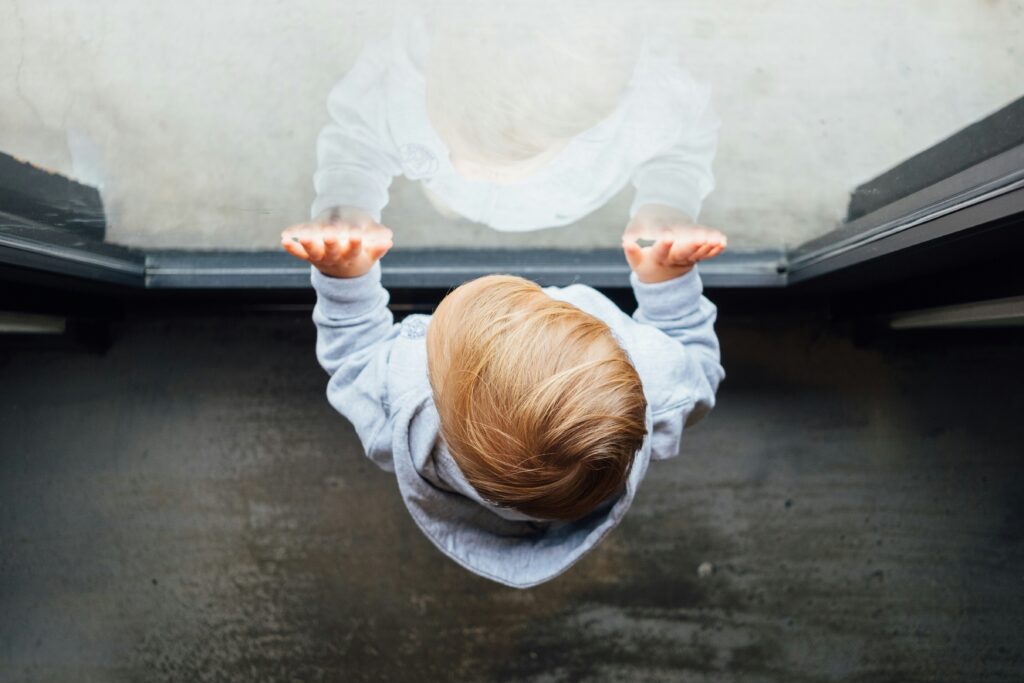Why Mindfulness Works for Little Minds
Toddlers live close to the surface. Emotions hit hard and fast. They feel everything, but they can’t always describe it or make sense of it. When overwhelmed, they act it out meltdowns, tantrums, sudden stillness. It’s not misbehavior. It’s underdeveloped self regulation.
That’s where mindfulness comes in. These simple, attention anchoring practices can actually calm the swirl. Breath work, gentle movement, and sensory focus give toddlers a way to slow down. Not by force. Just by being present.
Introducing mindfulness at this stage lays groundwork. It won’t be perfect and it doesn’t need to be. But with repetition, kids begin to recognize what calm feels like. That seed can grow into emotional control, better problem solving, and fewer stress responses later in life.
See more on teaching mindfulness tips
Exercise: “Find 5 Things”
This is one of the simplest and most effective tools for calming an anxious toddler in real time. All it takes is a little curiosity and a few sensory prompts. Ask your child to look around and name five things they can see. Then four things they can touch. Then three they can hear. Two they can smell. One they can taste. That’s it.
This little countdown flips their focus. It slows the swirl of thoughts and pulls them back into the now using their senses. It’s especially useful when they’re entering meltdown territory in overstimulating spaces think doctor’s office, grocery lines, or the backseat on a long drive.
No props, no prep. Just guiding their attention away from chaos and into something they already have: their own body and the world around them. Keep your tone calm but casual. The goal is to help them feel grounded, not tested.
Belly Breathing Made Fun
Helping an anxious toddler slow down often starts with the breath simple, visual, and fully within their control. This next exercise is a gentle way to make deep breathing interactive and engaging.
Exercise: “Teddy Bear Breathing”
This calming practice uses a favorite stuffed toy to turn mindful breathing into a playful moment.
How to Do It:
Have your toddler lie on their back in a quiet, comfortable space.
Place a small stuffed animal (such as a teddy bear) on their belly.
Guide them to take a slow breath in through their nose, watching the stuffed animal rise.
Then, breathe out gently through the mouth, watching the toy sink back down.
Why It Works:
The rising and falling motion creates a visual anchor to focus on.
Seeing the teddy helps toddlers understand the rhythm of their own breath.
It transforms breathing into a relaxing game, easing tension and supporting body awareness.
When to Use It:
Before naps or bedtime
During meltdowns to encourage emotional reset
As a daily ritual to develop calm habits
This simple method builds early body breath connection a foundation for emotional regulation toddlers can carry into later childhood.
Movement Based Calm: Stretch Like a Tree
Helping toddlers channel physical energy into gentle movement is a powerful way to reduce anxiety. The “Stretch Like a Tree” exercise is both fun and calming perfect for high energy moments or during transitions.
Exercise: Stretch Like a Tree
Guide your toddler through this simple, engaging routine:
Stand tall with feet planted firmly on the ground.
Reach up slowly, stretching arms overhead like tall tree branches.
Gently sway from side to side, just like a tree moving in the wind.
Take deep breaths as they move to reinforce calm energy.
Why It Works
Encourages release of built up energy in a mindful way
Combines movement with breath for a full body calming effect
Enhances your child’s awareness of their body in space
This activity can be repeated anytime your toddler needs to reset before nap time, after a meltdown, or as part of a morning routine. Keep it playful and light; even a minute or two can make a difference.
Using Storytime to Spark Stillness

Books can do more than wind kids down for bed they can be powerful mindfulness tools when chosen with care. Look for titles that center on calm, breath, or simple peaceful imagery. Books like “Breathe Like a Bear” and “Peaceful Like a Panda” are designed with rhythm, repetition, and breathing cues built into the storytelling. They work because toddlers respond well to patterns and predictability.
As you read, match your voice to the tone of the book. Speak slowly. Pause where the author suggests breathing in or out. By syncing your voice with calming breath patterns, you’re modeling self regulation without spelling it out. Over time, this turns storytime into more than just entertainment it becomes a quiet ritual your child can count on.
Do it consistently, and storytime becomes a signal. The brain starts to associate certain sounds and books with a drop in energy, with a shift from chaotic to calm. That’s not just bedtime magic it’s mindfulness in action.
Start Small Stay Consistent
Toddlers don’t need elaborate routines. In fact, the simpler, the better. Repetition helps them feel safe. It builds memory and routine. That’s why a short, daily mindfulness moment done the same way each time can go further than a long session done once a week.
Pick natural transition points: maybe a quiet breath before breakfast. A short stretch before brushing teeth. Two minutes of belly breathing before bed. These micro habits stick because they fit. You’re not adding work you’re building calm into things you’re already doing.
Also, don’t stress about calling it “mindfulness.” That doesn’t matter to them. Turn it into a game, a story, a silly breath with sound effects. If it feels playful, they’ll want to come back to it. That’s the real win.

 Sarah Ainslie is an experienced article writer who has played a crucial role in the development of Toddler Health Roll. With a passion for child health and wellness, Sarah's writing offers parents insightful and actionable advice on nurturing their toddlers. Her articles are well-researched and thoughtfully crafted, providing practical tips on everything from nutrition to emotional well-being, making her contributions invaluable to the platform.
Sarah's dedication goes beyond just writing; she has been instrumental in shaping the content and direction of Toddler Health Roll, ensuring that it meets the needs of parents seeking reliable guidance. Her work has helped establish the platform as a trusted resource for families, offering comprehensive support for raising happy, healthy toddlers.
Sarah Ainslie is an experienced article writer who has played a crucial role in the development of Toddler Health Roll. With a passion for child health and wellness, Sarah's writing offers parents insightful and actionable advice on nurturing their toddlers. Her articles are well-researched and thoughtfully crafted, providing practical tips on everything from nutrition to emotional well-being, making her contributions invaluable to the platform.
Sarah's dedication goes beyond just writing; she has been instrumental in shaping the content and direction of Toddler Health Roll, ensuring that it meets the needs of parents seeking reliable guidance. Her work has helped establish the platform as a trusted resource for families, offering comprehensive support for raising happy, healthy toddlers.
